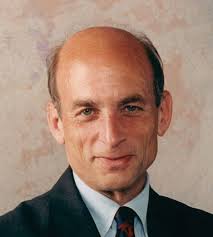The WSJ on the occasion of Martin Lipton’s 80th birthday, discusses the man and his firm.
On Wachtell’s structure, the article notes that Wachtell “has become one of the world’s most profitable and best-known legal brands under Mr. Lipton’s management,” that it charges “by the case, rather than by the hour,” that the firm’s “primary business getters today are in other generations,” “has a culture that’s so embedded, so deep,” that “partners—not teams of junior attorneys—do most of the work,” has only one office, pays its partners by a lockstep system rather than performance, and “is a fraction of the size of some rivals” (1/10th the size of Skadden). Last but not least, the article notes that Wachtell had the highest profits per partner last year.
Wachtell is a classic example of what is likely to be a small group of firms that will survive what I’ve called The Death of Big Law. I conclude that Big Law died (not is dying, or will die, but is dead) because it outgrew its ability to sustain itself. Here’s my thesis in a nutshell (at 777):
The theory of the Big Law “firm” is based on the idea that the firm generates reputational capital. However, the conditions for maintaining this capital, particularly including seniority-based compensation and a rigid up-or-out promotion tournament, exist only in relatively few top-line firms, such as Cravath. Many more have adopted the Big Law form without the internal structure necessary to maintain it. When big firms try to expand without the support structure they are prone to failure.
Wachtell is succdessful because it stuck with the classic reputational capital model. One wonders what will happen when Lipton’s gone, and a new guard faces the temptation to expand and leverage.
The article of course notes Wachtell’s shining achievement — the creation of the poison pill. This is significant as one of the few very successful legal “products.” Here again, Wachtell is exceptional, as I discuss in the above article (at 779):
Although Wachtell’s becoming a dominant advisor on takeover defenses demonstrates that law firms can internalize the benefits of innovating legal products even without formal intellectual property rights protection, it is not clear when the necessary conditions exist. Martin Lipton could offer the pill to clients bundled with his own general high-level advice for corporate managers. Thus, even if clients could get any corporate law firm to draft a pill, many would prefer to buy the pill plus related advice from Wachtell. Lipton’s ability to capture the pill’s benefits gave him an incentive to serve as its public advocate and to produce a scholarly rationale for strong takeover defenses.
In a more recent paper, Bruce Kobayashi and I expand on the theme of legal products, and the significance of intellectual property rights in their creation outside the special circumstances of Marty Lipton.
Finally, the WSJ article notes that Wachtell is “one of the few major law firms without a written partnership agreement.” The Law Blog adds:
The absence of a document that addresses matters critical to the firm’s existence as an entity separate from its individual members is uncommon, especially given today’s environment of rising tensions between partners and law firms.
(The LB adds that Cravath also doesn’t have a written partnership agreement.)
This is an interesting phenomenon that deserves a longer post. One might think it quite odd that a business based on the idea that everybody else in the world should pay a lot for binding contracts doesn’t think it needs one. On the other hand, in Cravath and Wachtell the practice fits with the conditions of trust that support these firms, as discussed above.
On the third hand, the law firm agreements I’ve seen are not so great. Of course these are in litigated cases, arguably not a fair sample. But one wonders if the current state of law firm agreements reveals a general deficiency in lawyers’ business expertise, on others’ behalf as well as their own. Here is an empirical project that yearns to happen if only one could get hold of the data.




